
Great Smoky Mountain NP
(Spring Break 2015)
Well, now we've done it. After sitting on the fence for more than a reasonable amount of time, we've finally decided to buy a camper. For those that know me well, it will come as no surprise that it's no ordinary camper. Specifically, we decided to buy a SylvanSport GO. Spring Break provided just the opportunity to pick it up and kick the tires.
We headed for Brevard, North Carolina, where each GO is crafted by the outdoor-loving folks at SylvanSport. My expectations going into this were pretty high. I wanted something that we'd use often, was easy to setup, and could be used to haul an overabundance of gear (kayaks, bikes, packs, etc.). The GO is exceptionally simple, but don't be fooled; everything seems to have been designed with a purpose and built using high quality materials. After a thorough orientation at the factory, we headed for the Cataloochee Valley in the Great Smoky Mountains National Park to try it out.
I must admit that I found the idea of towing a bit intimidating. I'm not sure why, because it's not really all that bad. Our compact SUV was able to accelerate normally and we could achieve interstate speeds without a problem. You can definitely tell you're pulling something -- there is a tugging sensation over bumps, but soon enough you'll become accustomed to it. Changing lanes in traffic takes a bit more planning, and you'll need wider turns and larger parking spots at stopovers. Our gas milage on the return trip was 1-mpg less than the trip out. Overall, towing is nothing to worry about, but I still can't shake the feeling that I'm being tailgated.
Tip: Click to enlarge. Use the 'Left' and 'Right' arrow keys to navigate the gallery.
The moment of truth came at the campground when we had to set up without the safety net of our friendly orienter. As it happens, the hardest part was figuring out where we wanted our door to open. One person can unhitch and move the GO around the campsite, but it was more cumbersome than I imagined it would be. (The tongue weight is 70-lbs.) Leveling can be tweaked a bit with the four stabilizer jacks in each corner. The included awning creates a cozy space and provides some protection from the sun and rain. From travel mode to camp mode, we were able to completely set up in about 30 minutes. I'm sure we'll get faster over time.
Speaking of rain, what would camping be without a downpour? We had just settled in around the campfire when thunder started rolling across the valley. It rained heavily the entire night, but inside the GO, we stayed dry. The middle table configuration was a big hit -- good for a card or board game while it was raining outside. The tent trapped more heat than I expected a single-wall material to retain, and I did notice a fair amount of condensation build-up in the mornings. Hopefully it won't be too hot in the summer months.
The new day ushered in sunshine, and after breakfast we set out to explore the hiking trails in the area. We hadn't gone very far before we saw an elk bull feeding in the forest. He was positively giant in comparison to the white-tailed deer we're used to seeing in Indiana. The Cataloochee Valley was popular with the early settlers and several historic buildings still remain. One of the more curious remnants are the hand-built stone walls along the Boogerman Loop Trail. Imagine life as a homesteader in the late 19th century! The trail runs alongside the Caldwell Fork with many footbridges; some in better condition than others. A singular regret from our Alaskan backpacking trip a few years ago is that I never got to do a proper river crossing. Who knew the Great Smoky Mountains would present not one, but three, opportunities?! Cheers to the person who invented quick-dry fabric!
We packed up the GO and headed for home along the windiest mountain road I've ever driven. Mt. Sterling Road follows an old Cherokee trail and was the first wagon road in the Smokies. Apparently the park system didn't consider the "Old Cataloochee Turnpike" worth paving, or perhaps a single lane dirt road with blind curves is meant to be a traffic deterrent? To provide temporary relief from the white-knuckle driving, we decided to climb Mount Sterling, a 6 mile out-and-back with 2,000-ft elevation gain. We cobbled together lunch at the summit and hiked down in double-time. You know that moment where your kids can do something better than you can? Yeah, that. I could not have matched Greta's pace on this hike. We headed for home trail weary, but already looking ahead to our next adventure. We can't wait to take the GO on the road this summer when we head for the Black Hills, South Dakota.
If you find yourself near Indianapolis and want to check out the GO in person, get in touch. It was helpful for us to see it before deciding to buy one for ourselves.

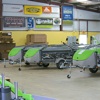
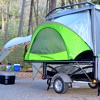
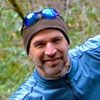

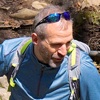


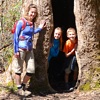
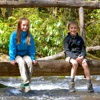
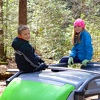
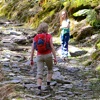
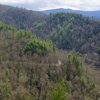
What others are saying...